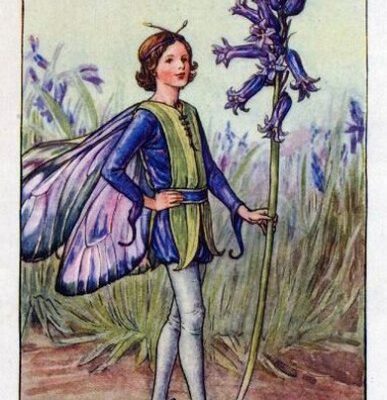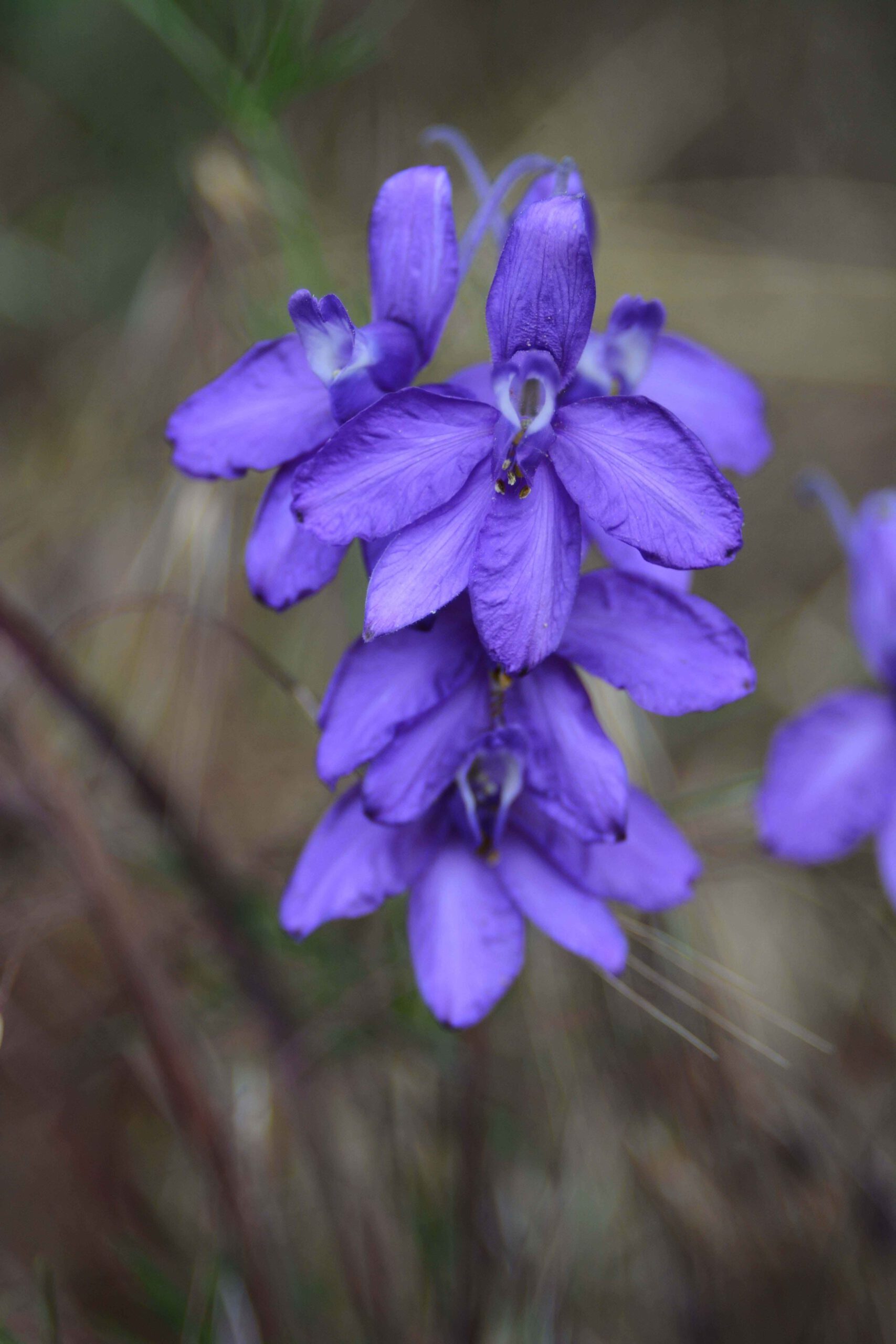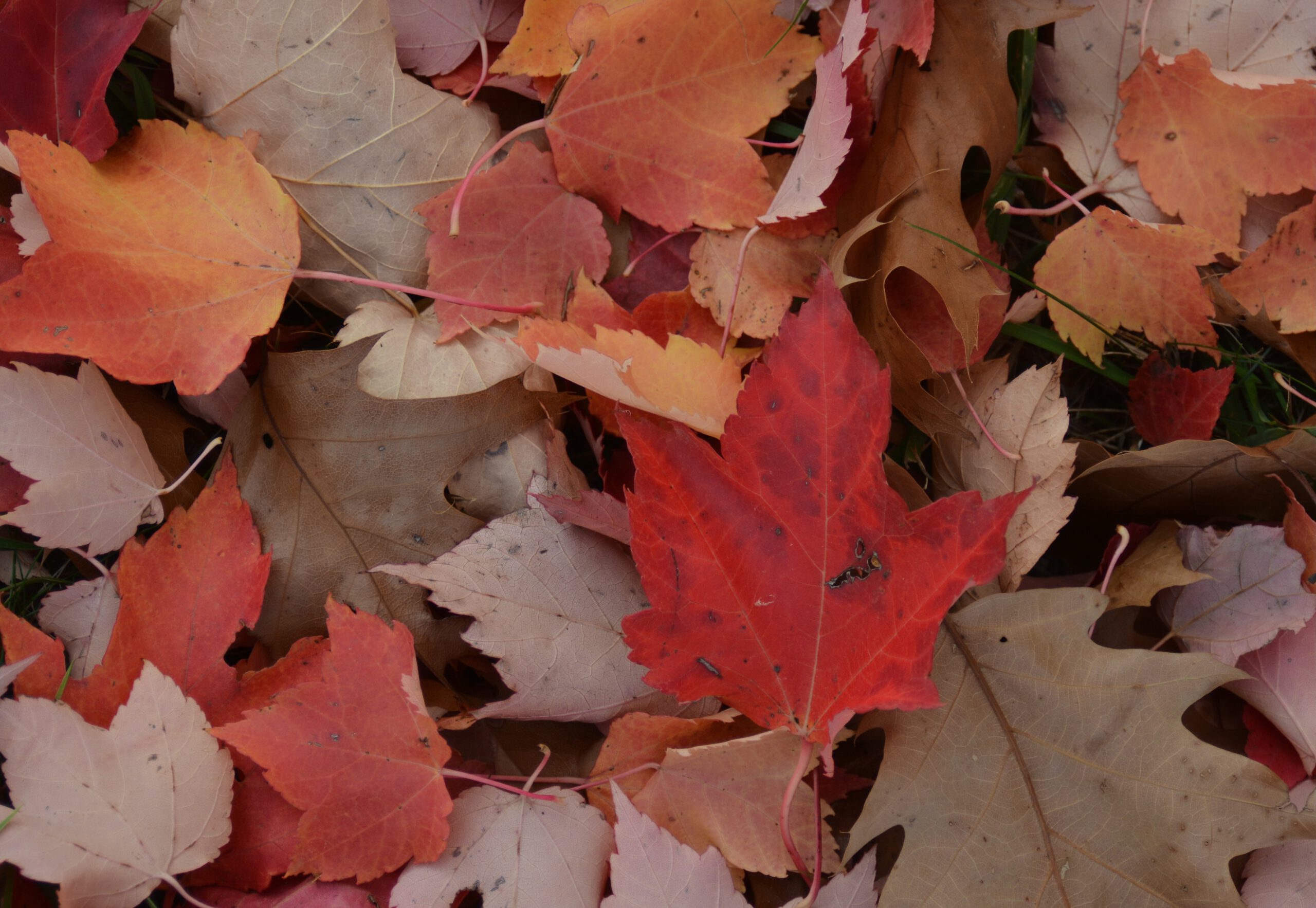Bluebells bloom from mid-April to early May. They are usually the two difficult-to-distinguish species Hyacinthoides non-scripta (picture) and H. hispanica.

Endymion and Hyacinthoides
A botanical puzzle featuring the names of classic heroes
The scientific name of bluebells, Hyacinthoides, refers to the genus's similarity to the more commonly known hyacinths. For a time, the later published genus name Endymion was also used.
Botanists plunder classical mythology
Endymion and Hyacinthus are both borrowed from Greek mythology. Botanists of past centuries were proud of their classical education and drew upon it to name plants. The Belgian botanist Barthélemy Charles Joseph Dumortier (1797–1878) followed this tradition. He named the pretty bluebells after Endymion, an attractive figure from Greek mythology.
Endymion and Selene
Endymion was the sleeping lover of the moon goddess Selene. The bizarre story of the two has fascinated the art world. The scene in which Selene visits the sleeping Endymion has been depicted numerous times in paintings. Selene falls in love with Endymion. She transports him to a cave on Mount Latmos in Caria and, with the help of Zeus, puts him into an eternal sleep. In doing so, she saves him from death and grants him eternal youth. During her nightly visits, she gradually bears him fifty daughters.
How did the plant get its name?
The currently valid name Hyacinthus non-scriptus for the bluebell was given by Linnaeus in 1753 in "Species Plantarum". The specific epithet "non-scriptus" was intended to make it clear that, unlike the hyacinth (Hyacinthus orientalis) familiar to Greek authors, this plant was not described or celebrated in mythology.
The epithet “non-scriptus” only makes sense as long as the species remains within the genus Hyacinthus. However, this has not been the case since 1803. Due to significant differences between the genera, the bluebell was first renamed Scilla non-scripta, then Endymion non-scriptus, and finally Hyacinthoides non-scripta.

The painting "The Sleep of Endymion" was created by Anne-Louis Girodet-Trioson (1767-1824), a respected painter and pupil of the even more famous history painter Jacques-Louis David. Thanks to his extensive education, Girodet-Trioson was able to imbue his paintings with intellectual and symbolic meaning, of which "Endymion" is a perfect example.
And what does the larkspur have to do with it?
The mythological hyacinth is said to have sprung from the blood of the dying Hyacinthus after he was fatally struck by a discus. His lover Apollo is said to have inscribed the letters AI on the flower's petals to record the dying man's cries of pain, AI AI ("ah"), for posterity.
But something about this story doesn't add up. A signature resembling the letters AI is nowhere to be found on the hyacinth. With a little imagination, however, it can be found on the petals of the larkspur (Consolida ajacis). Perhaps the larkspur was the plant born from the blood of Hyacinthus. At least, that's what Helmut Baumann suggests in his work "The Greek Plant World in Myth, Art and Literature".
This wouldn't be the only instance of a plant being misidentified in classical literature. With larkspur, the letters AI are also associated with Ajax (hence the epithet "ajacis"). Ajax, the Telamonian, was one of the most important heroes in the Trojan War, and he gave his name to the football club Ajax Amsterdam. After a defeat in battle, he took his own life with his sword.

In England, where it is probably native, the pretty spring flower is called "Wild Hyacinth" or "Fairy flower".

The field larkspur (Consolidas ajacis). It takes a little imagination to see the letters "AI" on the petals.
Even more classic names
But let's conclude the "names-odyssey" of the bluebell. The botanists Johann Centurius von Hoffmansegg and Johann Heinrich Friedrich Link transferred the species from Hyacinthus to the genus Scilla (also a mythological name) in 1803, before Christian August Friedrich Garcke placed it in the genus Endymion. Both names are still widely used. The bluebell received its current position in the genus Hyacinthoides in 1934 from Pierre Chouard. In England, where it is likely native, the pretty spring flower is called "Wild Hyacinth" or "Fairy Flower". The name “Bluebell” is also commonly used.
In Germany, the bluebell is a neophyte with larger populations in the Lower Rhine region and around Aachen.
The translation of the German name Hasenglöckchen into English leads to further confusion. In England, Hare-bells are the bellflowers (Campanula rotundifolia), and only in Scotland is Hyacinthoides actually called Hare-bell.


